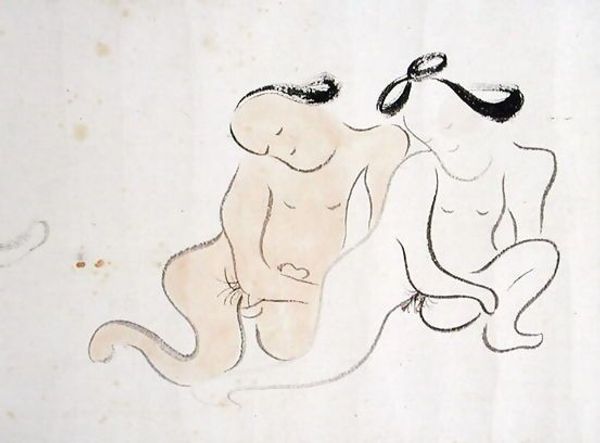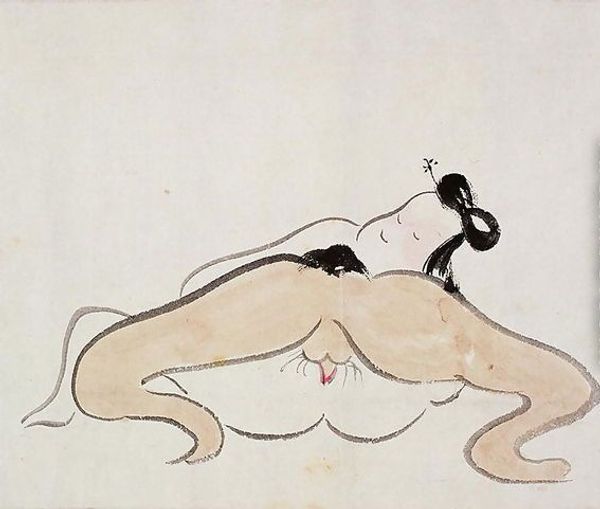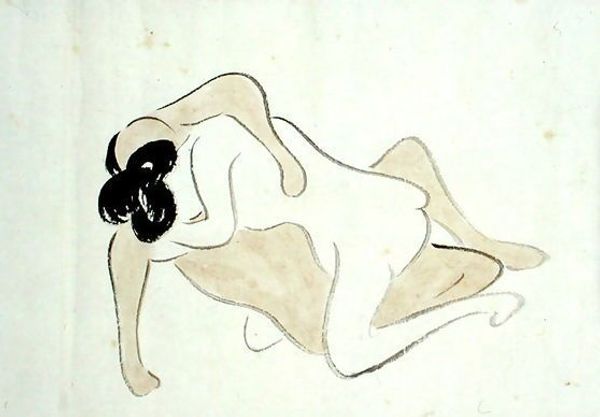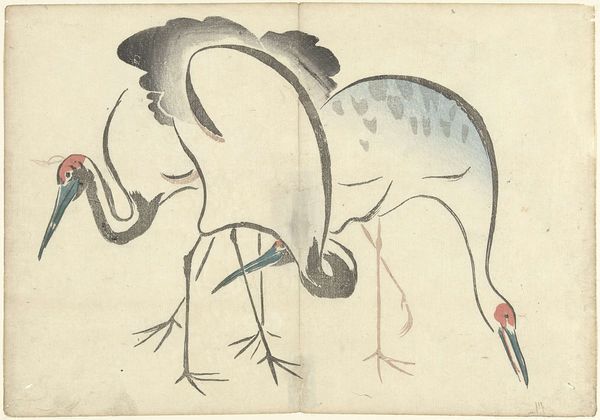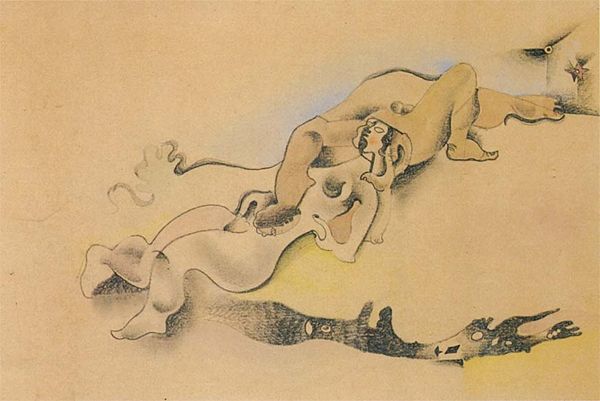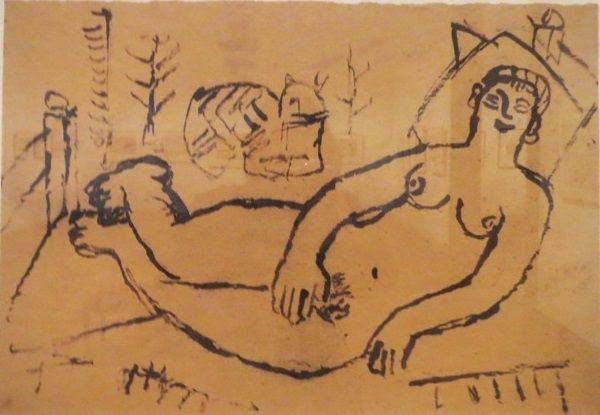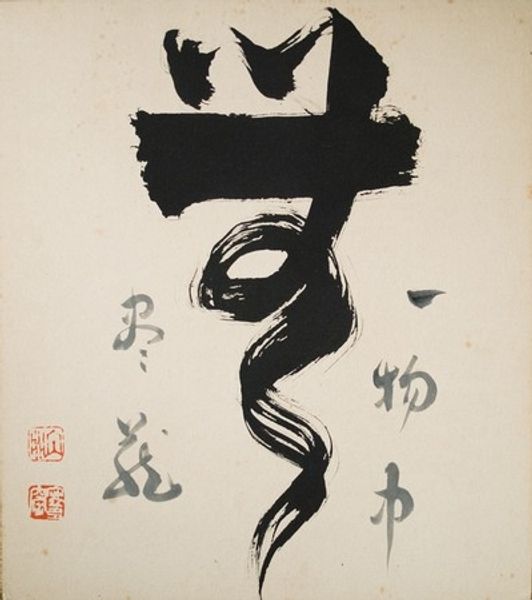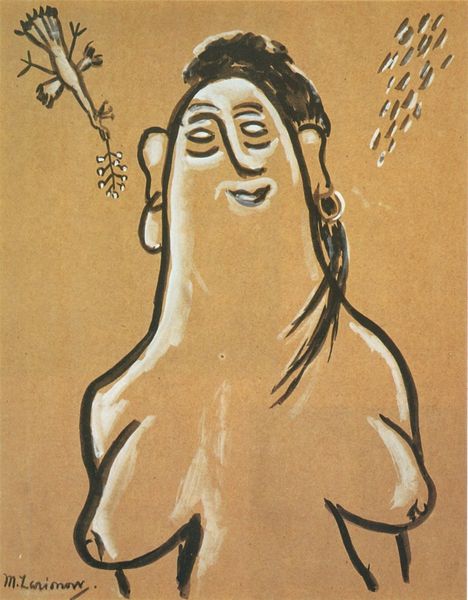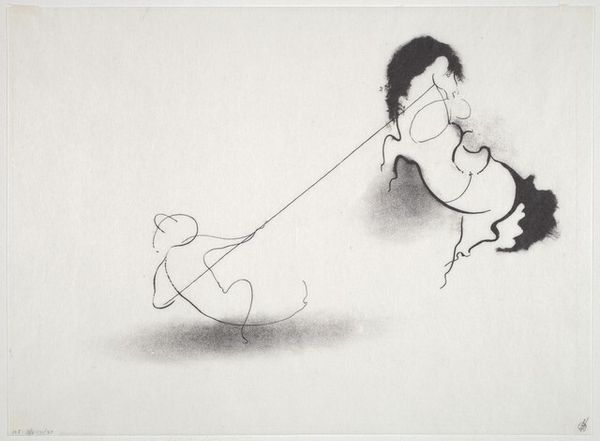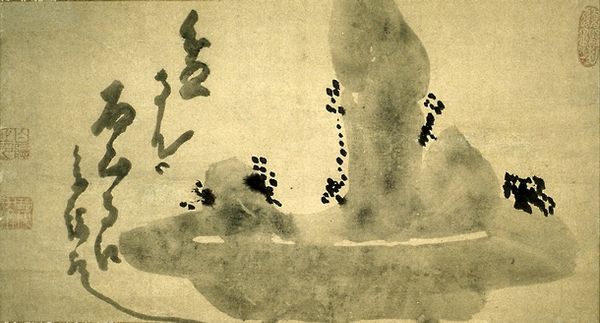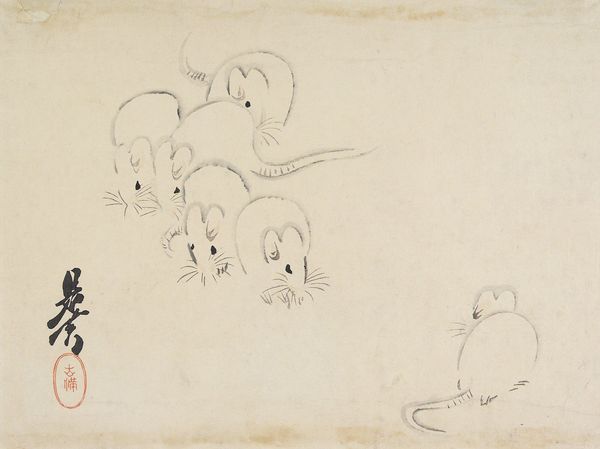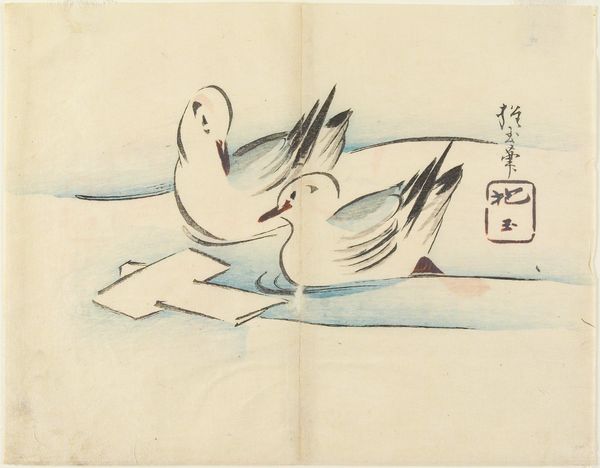
drawing, painting, ink
#
drawing
#
narrative-art
#
painting
#
asian-art
#
ukiyo-e
#
figuration
#
ink
#
erotic-art
Copyright: Public domain
Editor: Here we have *A Shunga* by Ike no Taiga, rendered with ink drawing and painting techniques. It's an intriguing image, both delicate and surprisingly forthright in its subject matter. What strikes you most about it? Curator: Given that *Shunga* falls into the *ukiyo-e* tradition, which catered to the urban population of the Edo period, I'm particularly interested in its intended audience. Erotic art like this served not just as titillation but also as instructional guides and even as talismans. Do you see anything in the composition or style that suggests this duality? Editor: I notice the simplified lines, almost cartoonish, and the focus on the interaction, makes it accessible and clear. That suggests an educational element, but the figures are also idealized, enhancing its alluring nature. Curator: Precisely. The artist employs this seemingly simple visual language to convey complex social messages and desires. Also, think about how such imagery circulates and is consumed. What does it mean when erotic art, originally intended for a specific social class, finds its way into museum collections and is viewed by a global audience? Editor: That's a great question. Its display normalizes its place in history. This piece helps us realize how dynamic eroticism can be through cultural practices, instead of existing solely in one dimension. Thank you for opening up new interpretations for me. Curator: My pleasure. Analyzing pieces like this makes you question the nature of art itself, along with its power, the intention behind it and its accessibility to audiences both then and now.
Comments
No comments
Be the first to comment and join the conversation on the ultimate creative platform.
